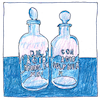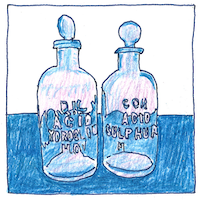Robert Boyle
chemistry

|
Chymistry
Boyle claimed that matter consisted of atoms and clusters of atoms in motion, and he distinguished mixtures from compounds. In The Sceptical Chymist: or Chymico-Physical Doubts & Paradoxes, Touching the Spagyrist’s Principles commonly call’d Hypostatical, As they are wont to be Propos’d and Defended by the Generality of Alchymists, Robert Boyle debunked the puffers of hot air who accepted the elements of Aristotle and van Helmont without verifying them experimentally. He defined chemistry as the rational and experimental study of the “Principles of Mixt Bodies,” and he observed that matter was not reducible to only a handful of principle elements, as ancient writers had claimed. Boyle was an alchemist but he believed that one should go about it without hocus pocus.
Alchemy
Ignorance is similar to innocence. Innocence is close enough to naïveté and confidence men are close enough to sincere practitioners that a dishonest effort may turn a profit more easily than an alchemist can waste his time. Today we know the elements are mutable. Ernest Rutherford converted nitrogen to oxygen; Enrico Fermi converted uranium to smithereens. And all elements heavier than helium are forged in the interior of stars. Only a few assertions remain true. Nothing is constant but change itself, a sucker is born every minute, and enough is enough.



Robert Boyle was a charter fellow of the Royal Society of London and is regarded as the first modern chemist.
See also in The book of science:
Readings in wikipedia: